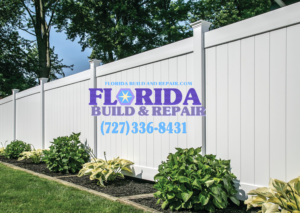Understanding Shared Fence Laws & HOA Rules in Clearwater Beach
- Clearwater, Privacy Fence Benefits & Uses, Privacy Fence Costs Clearwater, Privacy Fence Installation Clearwater, Privacy Fences, Vinyl Privacy Fence Contractor Clearwater, Wood Privacy Fence Service Clearwater
Understanding shared fence laws and HOA rules in Clearwater Beach requires careful consideration of both state laws and local regulations. Here’s a comprehensive overview of the key points to keep in mind:
Florida Fence Laws
Property Line Fences
In Florida, there is no legal obligation for neighbors to share the cost of building a fence along their shared property line. If one landowner decides to build a fence, the other is not required to contribute unless they agree to do so in advance. However, if neighbors do decide to build a fence together and share expenses, it’s highly recommended to have a written agreement outlining the arrangement.
Existing Fences
For fences already in place on a boundary line, both neighbors are considered joint owners and share equal responsibility for maintenance and repairs7. This applies even if the fence was installed by a previous owner.
Good Neighbor Fence Law
Florida does not have a specific “Good Neighbor” fence law that requires neighbors to share fence costs or responsibilities.
HOA Fence Regulations
Homeowners’ Associations (HOAs) in Clearwater Beach often have specific rules regarding fences. These rules are typically outlined in the community’s Covenants, Conditions, and Restrictions (CC&Rs).
Common HOA Fence Rules
- Height restrictions: Many HOAs limit fence height, often to 6 feet or less.
- Material requirements: Some HOAs specify acceptable materials, such as wood, vinyl, or aluminum.
- Color restrictions: Certain colors may be mandated or prohibited.
- Style guidelines: Specific designs or styles might be required.
- Setback requirements: There may be rules about how close to property lines fences can be built.
Approval Process
Before installing a fence in an HOA community, homeowners typically need to:
- Submit a detailed plan to the Architectural Review Committee (ARC).
- Provide a property survey.
- Include fence specifications.
- Pay any required fees (usually $25-$50, with a possible refundable deposit).
Clearwater Beach Specific Considerations
While specific to Pinellas County rather than Clearwater Beach, these regulations provide insight into local fence laws:
- Residential areas: Fences in side and rear setback areas can be up to 6 feet high.
- Front setback areas: Fences are generally limited to 3-4 feet, with some exceptions for decorative fences.
- Corner lots: Special rules may apply for fences on corner lots or those adjacent to certain road types.
Best Practices
- Check local ordinances: Always verify Clearwater Beach’s specific fence regulations before planning your fence.
- Communicate with neighbors: Discuss your plans with adjacent property owners to avoid disputes.
- Get written agreements: If sharing costs or responsibilities, document the arrangement in writing.
- HOA compliance: Carefully review and follow your HOA’s fence guidelines and approval process.
- Professional installation: Consider hiring a licensed fence contractor familiar with local regulations.
By understanding these laws and regulations, Clearwater Beach residents can navigate the process of installing or maintaining a fence while staying compliant with both state laws and HOA rules.
What materials are approved for fences in Clearwater Beach HOAs
Based on the search results, the most commonly approved materials for fences in Clearwater Beach HOAs are:
- Wood
- Vinyl
- Wrought iron
- Aluminum
These materials are typically allowed to maintain a cohesive appearance within the neighborhood1. Additionally, some HOAs may permit other materials such as:
- PVC
- Composite
- Brick or stone (in some cases)
It’s important to note that chain-link fences are rarely allowed in HOA communities. The specific materials permitted can vary between different HOAs, so it’s crucial to check your association’s most current governing documents for the exact requirements.
In Pinellas County, which includes Clearwater Beach, fences may be constructed of wrought iron, brick, concrete block, plastic, vinyl, chain link, or wood products that are typically prefabricated and commercially available. However, HOA rules may be more restrictive than county regulations.
When choosing a fence material, consider factors such as durability, maintenance, and aesthetics. For example, aluminum fencing is popular in the Tampa Bay and Clearwater areas due to its durability, affordability, and attractive appearance.
Always submit a detailed plan to your HOA’s Architectural Review Committee before installing a fence to ensure compliance with all rules and regulations.
How can I ensure my fence contractor is approved by the HOA
To ensure your fence contractor is approved by the HOA, follow these steps:
- Choose a licensed, bonded, and insured contractor with experience in HOA projects. Look for contractors who understand local building codes and have references from similar projects.
- Provide the contractor with a copy of your HOA’s fence guidelines and requirements. This will help them understand the specific rules they need to follow.
- Ask the contractor to submit detailed plans that comply with HOA regulations, including:
- Specific dimensions
- Exact paint samples or color specifications
- Material specifications
- Installation timeline
- Include the contractor’s information in your HOA application, such as their license number, insurance details, and relevant experience.
- Request that the contractor attend any necessary meetings with the HOA board to answer questions about the proposed fence installation.
- Ensure the contractor is willing to make any necessary adjustments to the plans if requested by the HOA.
- Verify that the contractor will obtain all required permits in addition to HOA approval.
- Maintain clear communication between yourself, the contractor, and the HOA throughout the process.
Remember, while a good contractor can guide you through the process, ultimately, you are responsible for ensuring HOA compliance. Always double-check that all requirements are met before and during the installation process.

Expert Tips from a Clearwater Vinyl Privacy Fence Contractor
Here are expert tips from vinyl privacy fence contractors in Clearwater to ensure a successful installation and long-lasting results: Planning and Preparation Installation Tips Maintenance

Professional Clearwater Vinyl Privacy Fence Installation vs. DIY: Which One Should You Choose?
When deciding between professional vinyl privacy fence installation in Clearwater and DIY, several factors should be considered: Cost Considerations While DIY installation may seem more

Why Choose a Clearwater Vinyl Privacy Fence Service?
Choosing a Clearwater vinyl privacy fence service for your home offers numerous benefits that make it an excellent investment for homeowners. Here’s why you should

Clearwater Wood Privacy Fence Installation: A Step-by-Step Guide
Installing a wood privacy fence in Clearwater is a great way to enhance your property’s security and aesthetic appeal. Here’s a comprehensive step-by-step guide to

Vinyl Privacy Fence Costs Clearwater
Clearwater Vinyl Privacy Fence Costs & Types Vinyl privacy fences cost between $25 and $60 per linear foot installed, with an average range of $40

Vinyl Privacy Fence Contractor Clearwater
When selecting a vinyl privacy fence contractor in Clearwater, consider the following key criteria: By considering these criteria, you can make an informed decision when

Best Wood Privacy Fence Service Clearwater
When considering the best wood privacy fence service in Clearwater, there are several key factors to keep in mind: Material Selection Choose high-quality wood that

Vinyl Privacy Fence Installation Costs in Clearwater
The cost of installing a vinyl privacy fence in Clearwater typically ranges from $22 to $45 per linear foot, including materials and labor. This price

Understanding Shared Fence Laws & HOA Rules in Clearwater Beach
Understanding shared fence laws and HOA rules in Clearwater Beach requires careful consideration of both state laws and local regulations. Here’s a comprehensive overview of

Do You Need a Permit to Install a Privacy Fence in Clearwater
In Clearwater, you generally need a permit to install a privacy fence, but there are some exceptions based on the fence’s height and materials. Here’s


